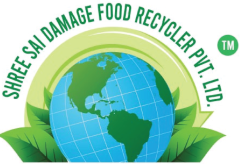Environmental Impacts by Waste Food Materials
Disposing of food waste has enormous impact on environmental and is causing serious problems. Every country today is buried in landfill sites – specially dug quarries, holes in the ground. Some waste rots eventually, but not all, and while they rot they might smell or produce methane gas, the gas which is explosive and contributes to the greenhouse effect more than the carbon dioxide. Leach ate formed as waste decomposes may root to pollution. Badly maintained landfill sites may draw vermin or cause litter.
Food packing and incinerating waste also causes lot of problems, since plastics have a tendency to produce toxic substances when they are burnt, such as dioxins. Gases from burning the food pickings may cause air pollution and contribute to acid rain, while the ash from incinerating food packaging may have heavy metals and other toxins. And because of these problems from burring food packages there are on the go campaigns against the food waste incineration. There are various campaigns that actively worked on these issues and some information. Throwing away food materials and other related things wastes resources. It wastes energy and the raw materials used in making these things and it also wastes money. Reducing waste means less harmful impact on environmental, less energy and resources used and saves a lot of money.
Impact of food wastage on land use
If you look at the bigger picture, the total quantity of wastage food in 2007 showed the production of 1.5 billion hectares of land, which is equivalent to about 35 % of the total agricultural land area. Wastage in the low income regions was about two-thirds of the total. The main contributors to land job are dairy and meat products, with 80 % of the total, their contribution alone to the total wastage of food is 11%.
Degradation of Land is also a key factor of wastage of food material. A lot of the food wastage at the agricultural production stage is in areas there is degradation of land or where the land soil is by now is in bad shape, thus adding up the undue weight on the land.
Impact of food wastage on climate and greenhouse gas emission
If you for a second leave GHG emissions from land use, the carbon footprint of produced food and then wasted is estimated to be 3.3 tonnes of CO2-equivalent.


